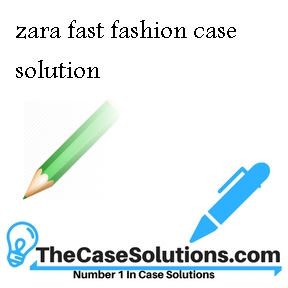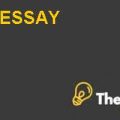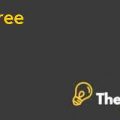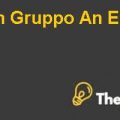QUESTION 1(a):
Zara is one of six brands, which was launched by Inditex Group. It was the most significant and one of the most prominent brand not just of the Group but of the whole textile and high-end clothing brands around the world. Due to the vise policies and brilliant strategies of the management it flourished and expanded at a very brisk pace and is now one of the most dominant and profitable brand chains of the Inditex brands. This was all possible due to the excellent business structure of the brand and its ability to keep itself at pace with the fast changing trends of the society.
It was due to this new business structure which was quite unique and never before witnessed in the clothes and accessories retail and manufacturing industry that the chain flourished and expanded enormously. The brand had already established and operated in 507 retail stores and outlets around the world in many different countries by the year 2001. The brand designed, manufactured and established its resources for its distribution purposes to all its retail outlets all over the world domestically in the home country.
The brand’s designer team studies and monitor prominent sales and newer emerging trends in the market and continuously dispatch roughly thousand designs to its manufacturing facilities and in some case independent suppliers. After that the team then dispatches the finished products back to its offices where the distribution facilities are located.
The products are then shipped to its outlets all over the world and this whole process took roughly two weeks in modifying an existing product and almost five weeks for a new product to reach the market. Other retail outlets mostly out-sourced their production to other suppliers in the developing countries of the region and it took them six months to design, and further three months to manufacture a single product and they faced numerous challenges in that process and this way they were not able to fast pace themselves as per changing market trends. Due to this policy, Zara was much alert and attentive to react to the newer emerging fashion in the industry and the changing tastes of its consumers.
ADVANTAGES:
Zara manufactured most of its products domestically and itself. The time it took for designing, manufacturing and distributing was by far the shortest among anyone in the industry along with its competitors. This enabled the brand to keep up with the changing trends of fashion around the globe and to keep up with the taste of the costumers in the fast changing trends and preferences of the society. Its distribution of new designs and products was much quicker and the volume was also diverse as it manufactured and introduced about 11000 different products in its retail stores annually while most of its competitors were down to only 2000-4000 products annually.
DISADVANTAGES:
The business structure and policies that Zara developed carried few flaws among it as well. First of all there were no marketing and advertisement campaigns launched as the company diverted and the money was rather used as capital expenditure to open up new stores and the brand only operated a single manufacturing and distribution capacity, which may prove to be counter-productive in worst circumstances.
QUESTION 2:
Part A
Financial Comparison
The financial performance of the company has been analyzed for the year 2001 against its major competitors. The liquidity position of the Zara is not better as compared to its competitors in the year 2001. As, in the year 2001 the current ratio of its key competitors are Gap 1.48 ,H &M 3.40 ,Benetton 1.63 while on the other side, the current ratio of Zara for the same period is 1.02. This shows that company has less sufficient resources as compared to its major competitors in order to pay off its current obligations.
All the companies in the industry are performing well and giving tough time to each other as well as they are focusing on capturing market shares by enhancing their profitability and productivity.
| Gap H &M Benetton Zara | |||||||
|
Liquidity Ratios |
|||||||
|
current ratio= |
1.48 |
3.40 |
1.63 |
1.02 |
|||
|
Net Working Capital to Sales Ratio = |
0.07 |
0.24 |
0.29 |
0.01 |
|||
|
Profitability Ratios |
|||||||
|
Gross Margin= |
29.9% |
51.6% |
43.3% |
51.9% |
|||
|
Operating Margin = |
2.4% |
13.8% |
13.6% |
21.7% |
|||
|
Net Margin= |
-0.1% |
9.6% |
7.1% |
10.5% |
|||
|
Leverage Ratios |
|||||||
|
Total debt to total assets = |
0.60355 |
0.2437 |
0.560085 |
0.4296 |
|||
|
Total debt to equity = |
1.52238 |
0.32242 |
1.273167 |
0.753 |
|||
|
ROA= |
-0.11% |
18.78% |
5.25% |
13.05% |
|||
|
ROE= |
-0.17% |
77.07% |
9.37% |
30.38% |
|||
The gross margin of the Zara is high as compared to its competitors as its three major competitors Gap, H& M; Benetton has gross margin ratios of 29.9%, 51.6% and 43.3% respectively. However, analysis of overall profitability ratios depicts that the Zara is performing better in comparison with its rivals on the basis of profitability as well as it also has high profits for the year 2001...............................
This is just a sample partial case solution. Please place the order on the website to order your own originally done case solution.













